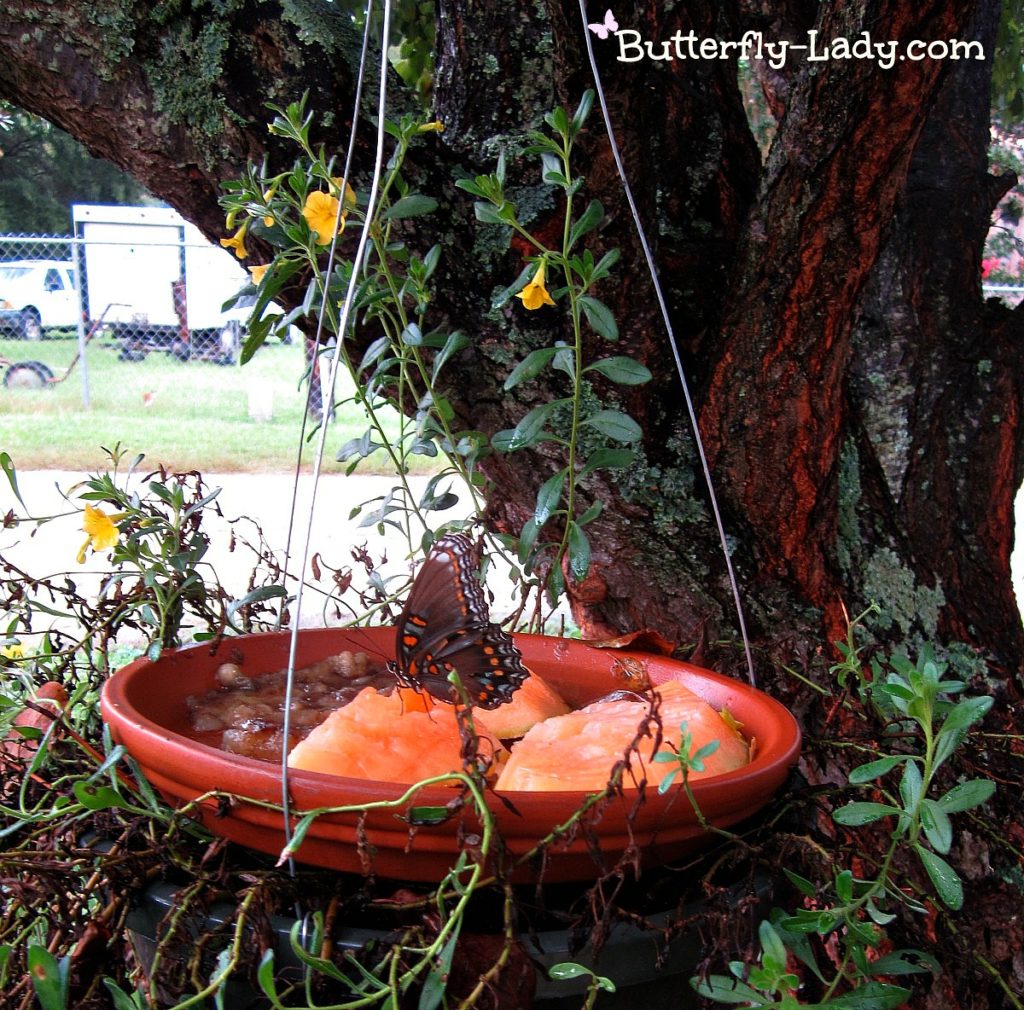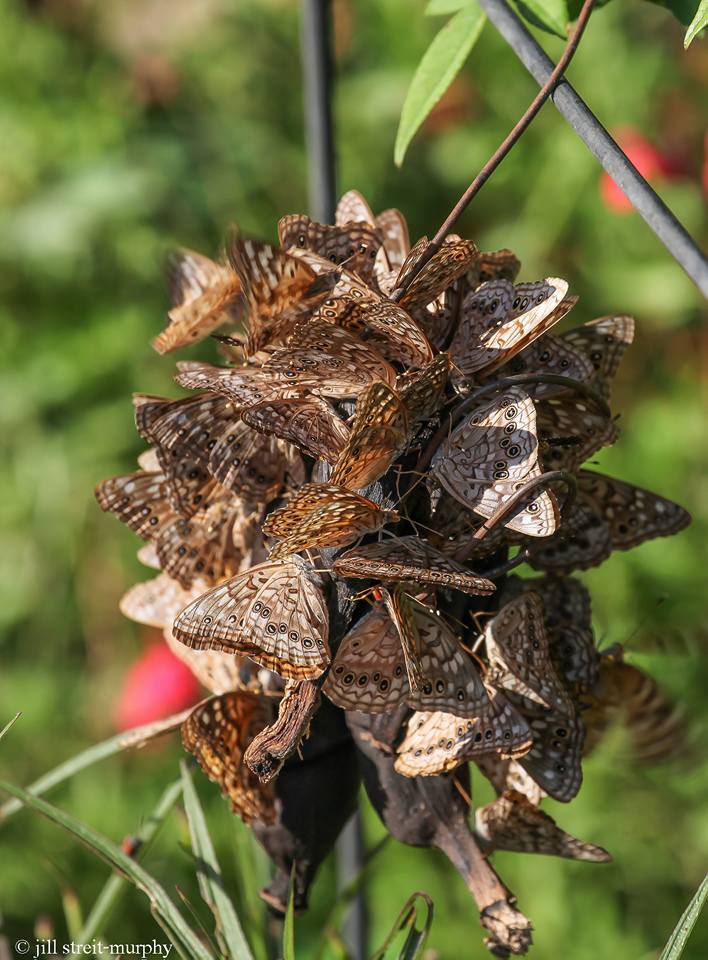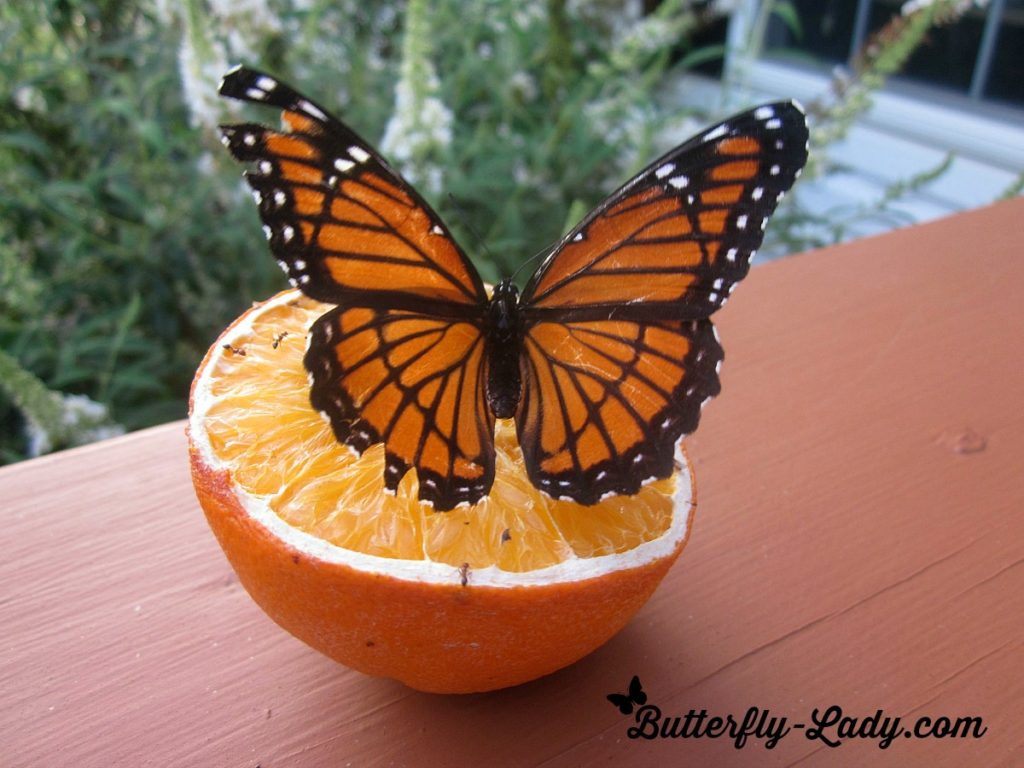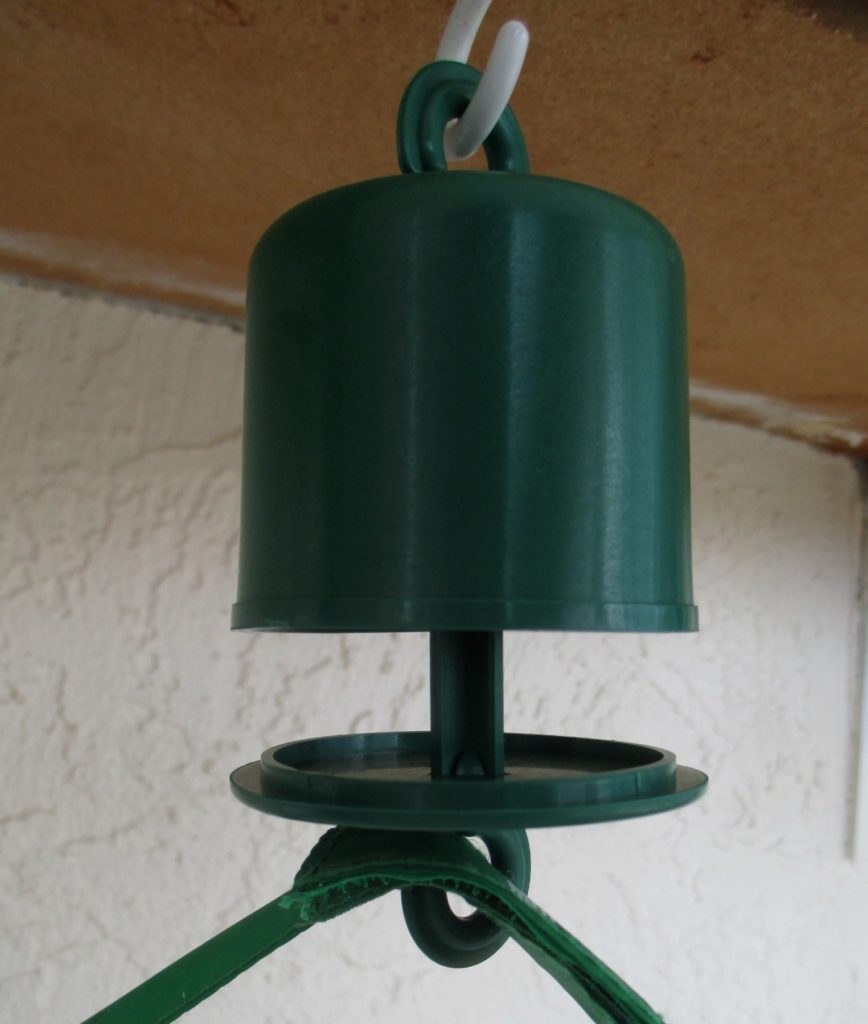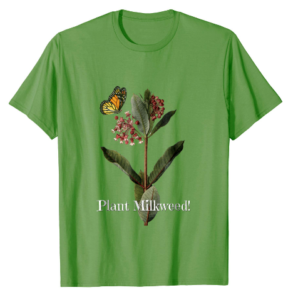One of my favorite butterflies to raise is the Eastern Black Swallowtail (Papilio polyxenes). It’s an easy species to attract to your garden. You just need to provide their host plants on which the females lay their eggs, including Dill, Fennel, Parsley, Rue or Golden Alexander and they will find them.
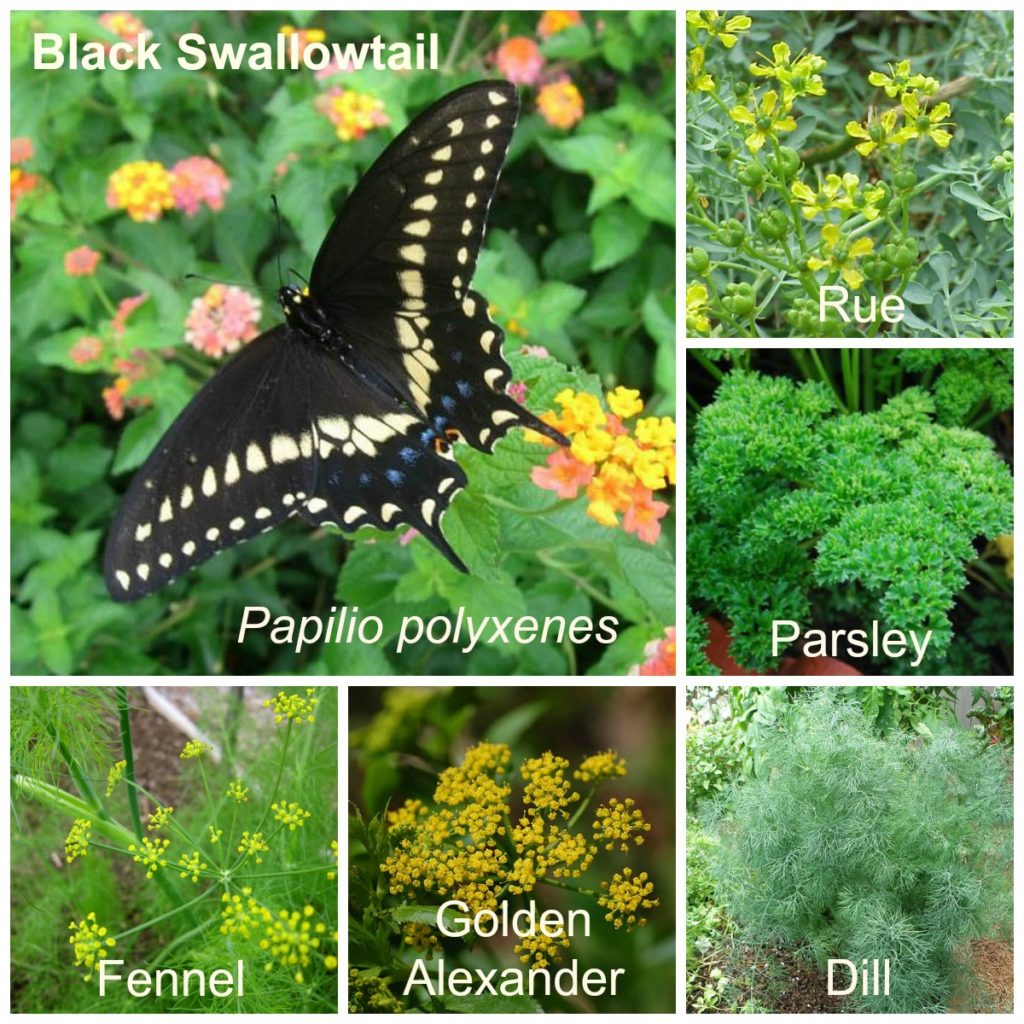
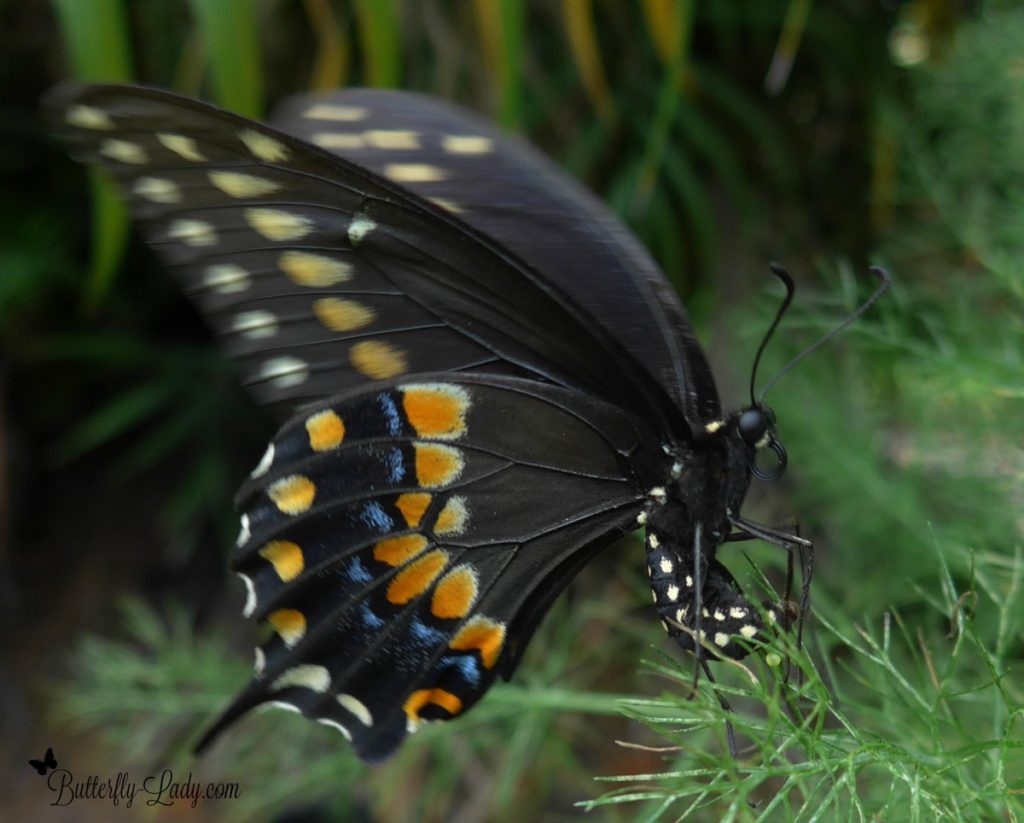
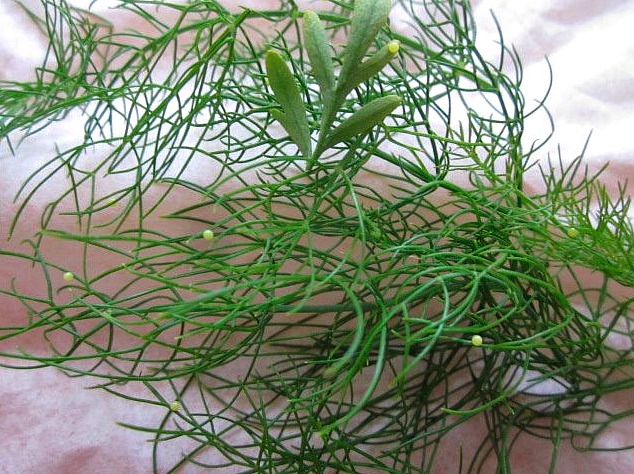
Once you find the eggs or tiny caterpillars, remove the leaves or pieces of the plant they are on and place them inside a small plastic cup with a lid. This keeps the tiny caterpillars from escaping.) Do not punch holes.
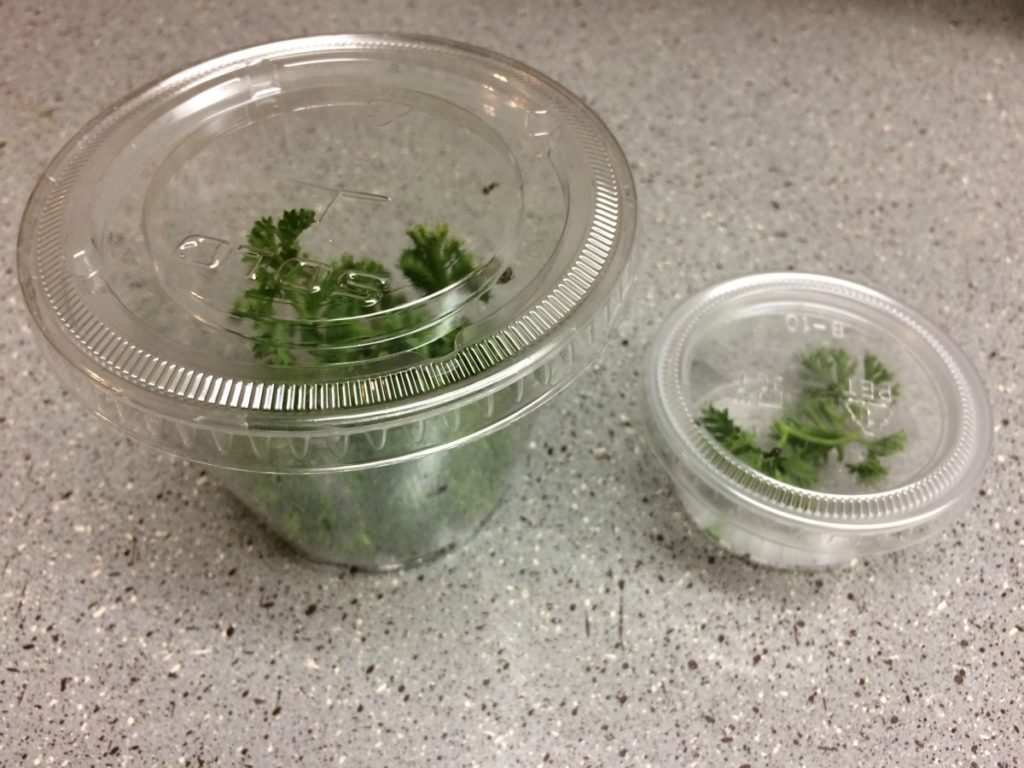
Keep them inside the cup until after they hatch and for a few days. Then you can place them inside a larger container. I like to use salad containers from fast-food restaurants, but you can use any container with a lid. I use a pushpin to punch air holes in the lid. Line the bottom of the container with a paper towel or coffee filter. Be sure to provide plenty of the host plant leaves on which you found the eggs and/or caterpillars.
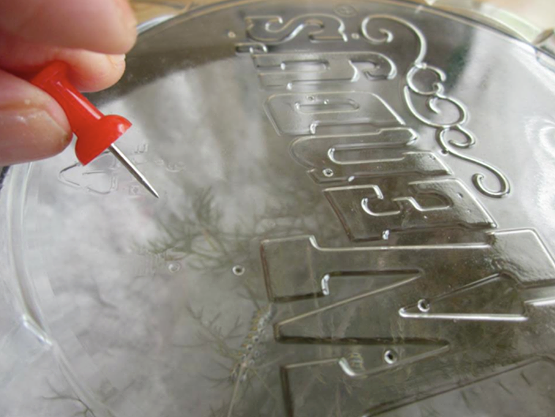
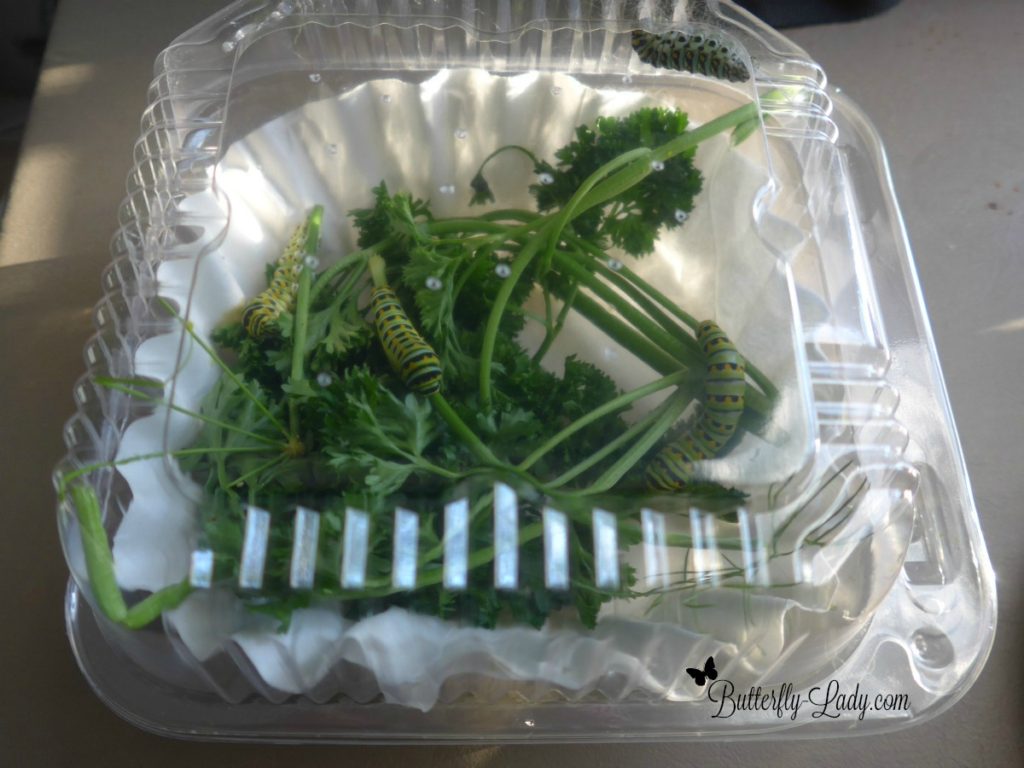
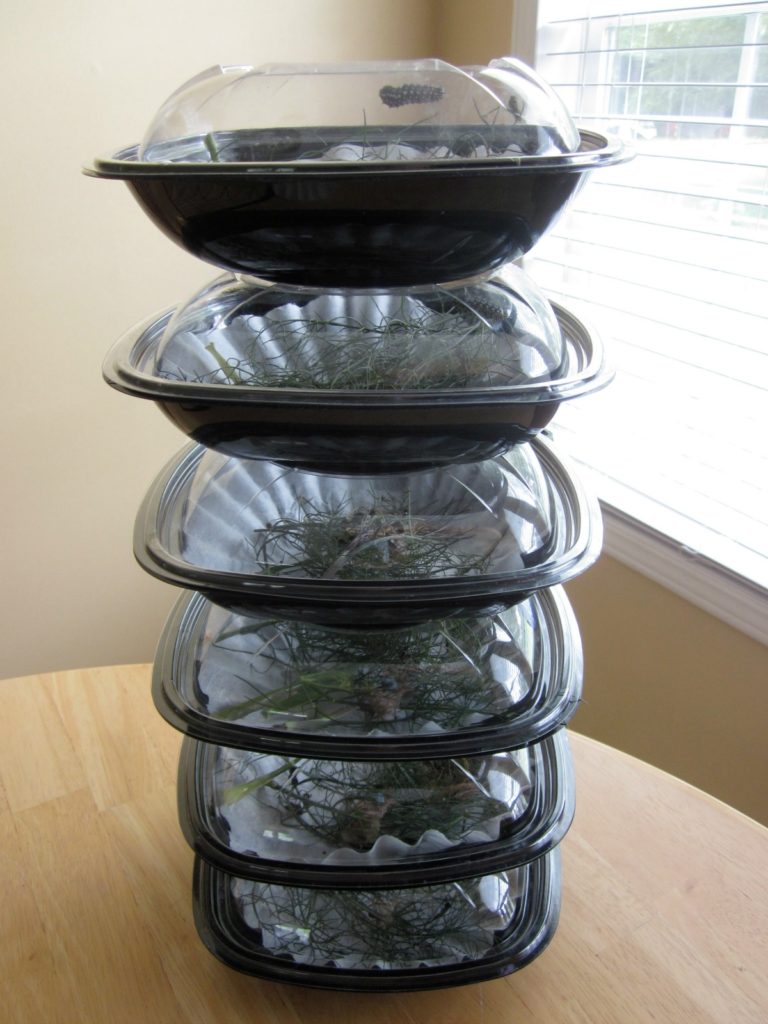
Check on your caterpillars each day to make sure they have enough food to feast on. Once they get bigger you will need to empty the fecal droppings (known as frass) each day and add a new coffee filter or paper towel plus fresh food.
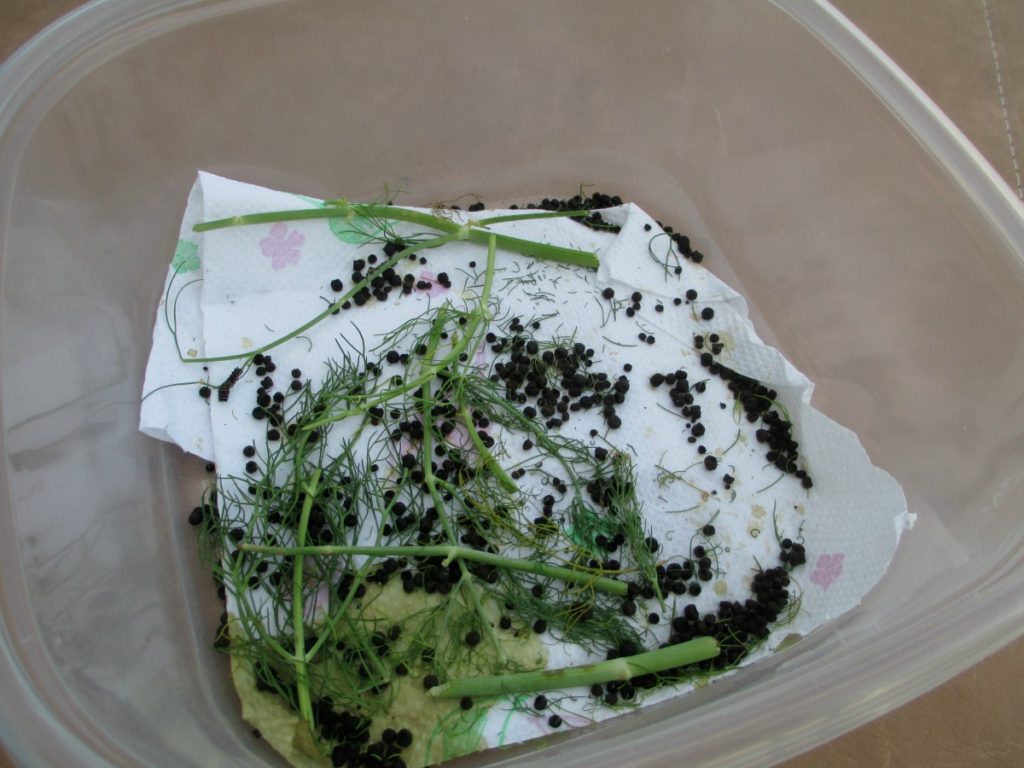
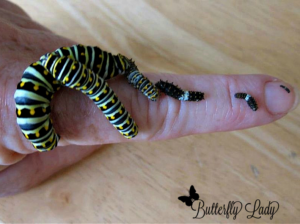 When they are ready to pupate, they will crawl to the top of the lid and make their chrysalis. Many people like to put sticks inside the container for them to use, but that is not necessary. However, it can be fun to see the different colors the chrysalis becomes.
When they are ready to pupate, they will crawl to the top of the lid and make their chrysalis. Many people like to put sticks inside the container for them to use, but that is not necessary. However, it can be fun to see the different colors the chrysalis becomes.
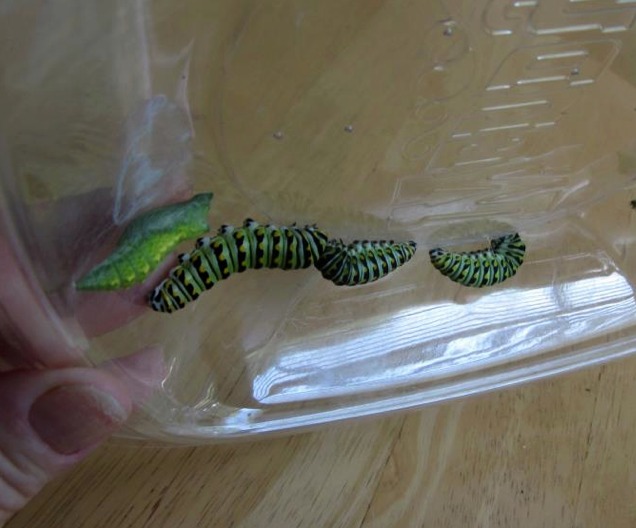
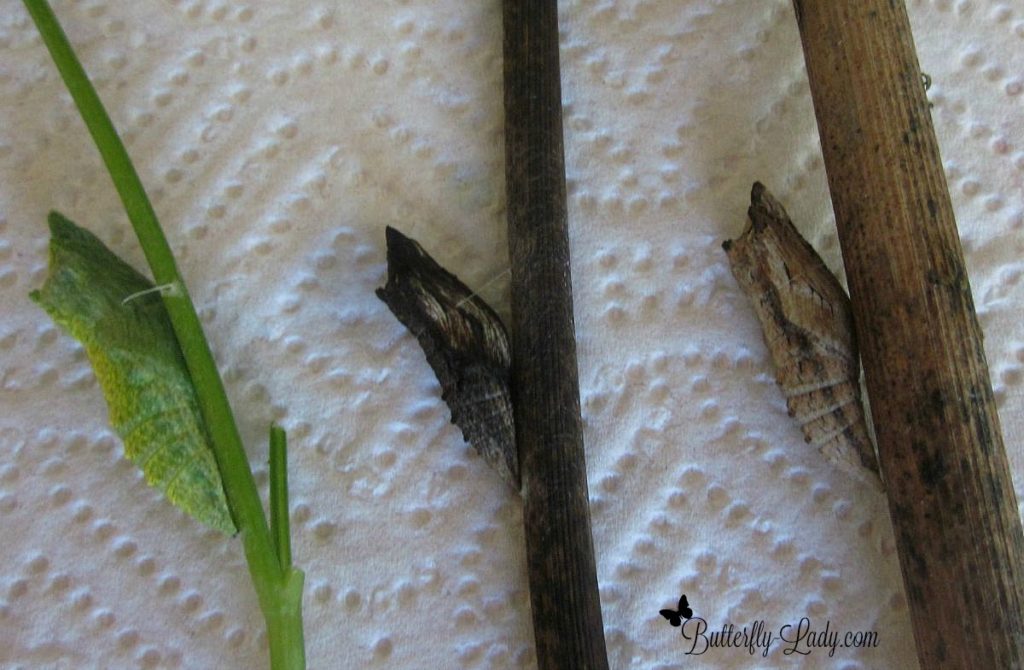
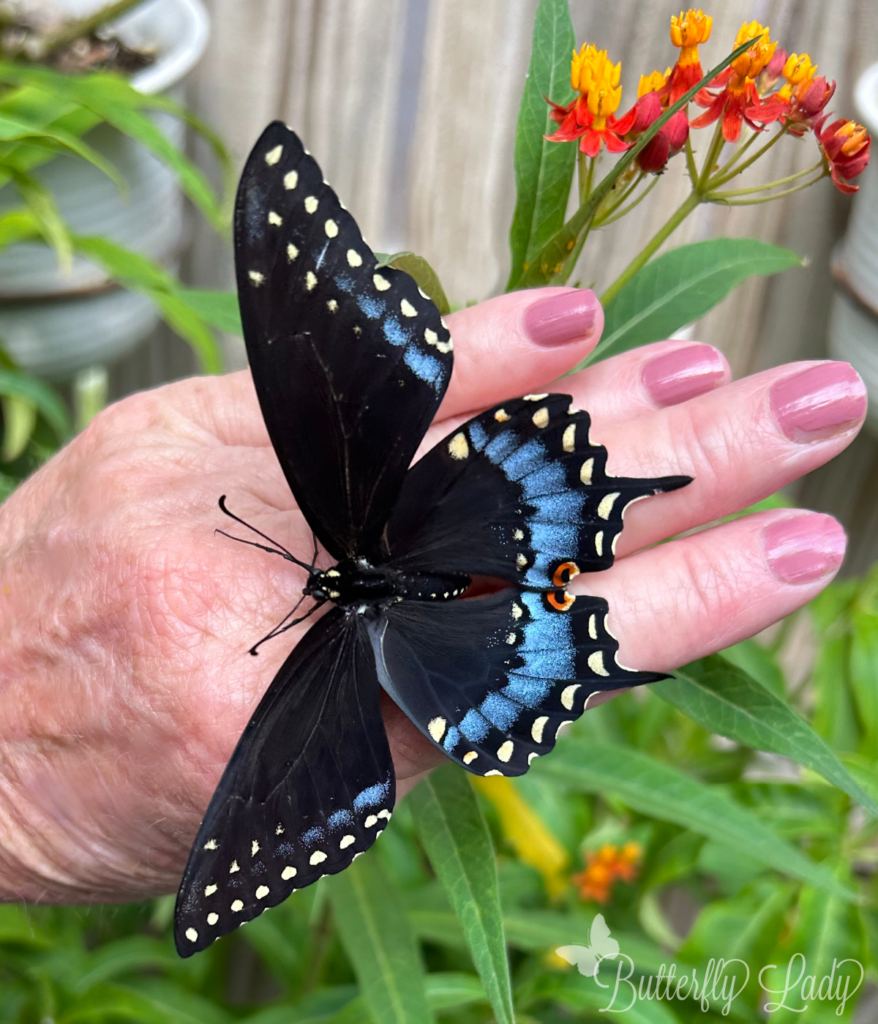
It usually takes about two weeks for the butterfly to emerge from the chrysalis. You can then experience the joy of holding and releasing your new butterfly.



